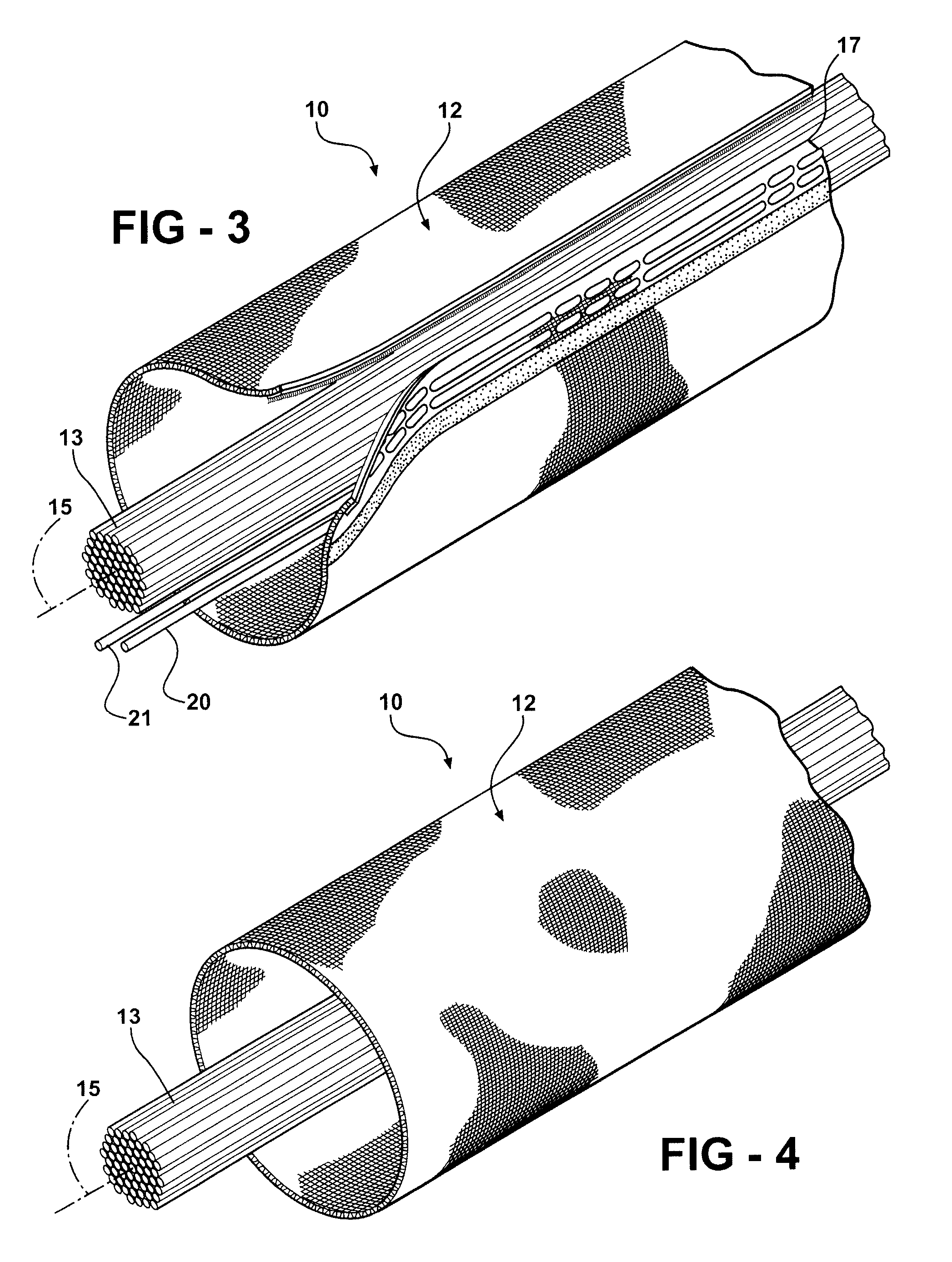Protective sleeve fabricated with hybrid yarn having wire filaments and methods of construction
a technology of hybrid yarn and shielding yarn, which is applied in the field of shielding sleeves, can solve the problems of spurious signals, adversely affecting the performance of surrounding electronic components, and emi, and achieve the effect of avoiding affecting the protective strength, conductivity and thus shielding ability of the shielding yarn
- Summary
- Abstract
- Description
- Claims
- Application Information
AI Technical Summary
Benefits of technology
Problems solved by technology
Method used
Image
Examples
Embodiment Construction
[0023]Referring in more detail to the drawings, FIG. 1 shows a sleeve 10 constructed from yarn, including at least in part hybrid yarns or filaments, referred to hereafter as hybrid yarn members 12, constructed according to one presently preferred embodiment of the invention. The term filaments herein is meant to include monofilaments and / or multifilaments, with specific reference being given to the type of filament, as necessary. The hybrid yarn members 12 (FIGS. 5-8) are formed with non-conductive monofilament and / or non-conductive multifilament members, referred to hereafter simply as non-conductive members 14, twisted or served with strands of micron-sized continuous conductive wire filaments, referred to hereafter simply as wire filaments 16. The individual wire filaments 16 are about 20-100 μm in diameter, for example, and provide the sleeve 10 with at least one of electromagnetic interference (EMI), radio frequency interference (RFI), and / or electrostatic discharge (ESD) prot...
PUM
| Property | Measurement | Unit |
|---|---|---|
| diameter | aaaaa | aaaaa |
| diameter | aaaaa | aaaaa |
| diameter | aaaaa | aaaaa |
Abstract
Description
Claims
Application Information
 Login to View More
Login to View More - R&D
- Intellectual Property
- Life Sciences
- Materials
- Tech Scout
- Unparalleled Data Quality
- Higher Quality Content
- 60% Fewer Hallucinations
Browse by: Latest US Patents, China's latest patents, Technical Efficacy Thesaurus, Application Domain, Technology Topic, Popular Technical Reports.
© 2025 PatSnap. All rights reserved.Legal|Privacy policy|Modern Slavery Act Transparency Statement|Sitemap|About US| Contact US: help@patsnap.com



